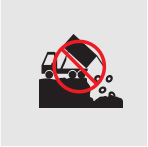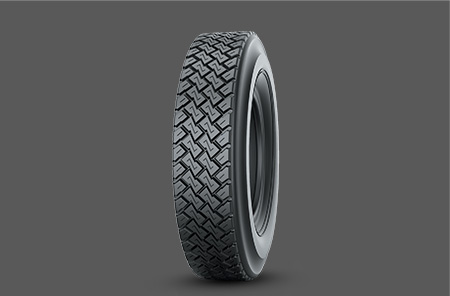
Retreading represents a niche industry in India, primarily known to fleet owners and operators dealing with commercial tyres. If you are new to the industry and feel a slight itch in your head hearing the word retreading, do not worry. We will help you understand retreading. We may not turn you into a retreading expert, but we will enrich your knowledge on the subject. To understand the tyre retreading as a process and as an industry, we need to ask ourselves a set of questions and find the correct answers.

On hearing the word retreading, a very fundamental question comes to mind - What is retreading? Is it buying and selling of tyres as it may sound when pronounced?
Well, it is certainly not the case. Retreading is a green and sustainable alternative to new tyres. It is a technical process of high precision and craftsmanship used to rejuvenate an old worn-out tyre into a renewed one.
After a vehicle has covered certain kilometres, , the top surface of a tyre called tread wears out, leaving you with two choices – either go for a new tyre or replace it with a new tread thus renewing the old worn-worn tyre.
Owing to the nature of its process, retreaded tyres is known by many names in the market, such as remolded tyres, resoled tyres, renewed tyres, etc.

Retreading saves 15 gallons of oil on every tyre.

Retreading means lesser carbon footprints.

Retreading reduces landfills of used casings.
While manufacturing a new truck/ bus tyre, 22 gallons of oil is consumed. On the other hand, retreading consumes only 7 gallons, leading to a saving of 15 gallons of oil per retreaded tyre.
Retreading also means lesser number of casings and lesser rubber on roads resulting in lesser carbon footprints. We must be mindful of land pollution caused by landfills full of scrap casings. One way to reduce these landfills is to minimize the number of scrap casings by reusing them through retreading. So next time when you choose to retread your old tyre, remember the good you are doing to our environment.

Retreading costs less than 30% of a new tyre

Retreading gives as good mileage as a new tyre

Retreading can reduce CPKM to 1/3rd of a new tyre
Retreading industry exists on the strong proposition of reducing the new tyres cost significantly. It is imperative to understand that new truck/bus tyres cost a fortune and demand a huge capital requirement, making them a significant part of a fleet’s operational cost.
If you ask yourself a question – Isn’t there a solution to this hardship? The answer is Yes, and we call it retreading. Retreading costs only a fraction of the new tyre cost (as low as 30%) and reduces the new tyre expenses significantly, improving the margins of fleet owners.
Retreaded tyre is as good as a new tyre- It is a scientifically proven fact. If you wish to search sources backing this claim, you may visit TRIB, an American organization renowned for its unparalleled contribution in educating the world about retreading and its benefits.
Often the conversation about retreading leads directly to the comparison of its performance against new tyres. It is questioned over and again if a retreaded tyre can compete against a new tyre. It is well established that retreaded tyres perform as good as new tyres. Once a tyre is retreaded, it is just like any new tyre.
Retreading has been the buzz of the town for its powerful proposition of minimizing the tyre Cost-per-Km (CPKM) by a large factor. CPKM, the embodiment of fuel efficiency, is an equally important parameter for tyres among the fleet owners. Tyres constitute the second largest cost component after fuel in operating a fleet.
Retreading adds another life to the new tyre at a mere proportion of its cost. It reduces the net tyre CPKM significantly; the tyre CPKM of the retreaded life is as low as 30% of the first life.
In day-to-day life if you come across retreading then you might get bombarded with certain questions about it.
The most common are –Is it safe, is it as good as a new tyre, or do retreads fail?
One thing you can be sure about these doubts is that they all are nothing but myths.
Here is a quick fact check on these doubts-

Yes. Retreaded tyres are as safe as new tyres. They are widely used across the globe in all sorts of commercial activities. They are safely used in vehicles of high importance such as school buses, ambulances, airplanes, military vans, etc.

No. Retreading rebuilds your worn-out tyre into a new one, it is as good as a new tyre and has absolute zero propensity towards any failure.
Retreading is not some roadside job; it is a highly technical process that asks for skilled workmanship and precise technology. One must choose the right casing and the right tread pattern & rubber compound to retread a tyre.
Anyone who retreads a tyre without keeping these factors in mind builds an inferior quality retreaded tyre and such tyres can always lead to failures.

Yes. Scientifically a retreaded tyre is as good as a new tyre. If you have chosen the right tread pattern with the right rubber compound, and retreaded with the right retreading process, your retreaded tyre will perform as good as a new tyre.

SELECT THE RIGHT CASING
Casing removed at TWI
Casing with no severe damages
SELECT THE RIGHT PRODUCT
High quality branded tread rubber
and other retreading materials
SELECT THE RIGHT RETREADER
Organised Setup
Trained workers and audited facility

Use damaged casing
Wear tyre beyond TWI
Under or over inflation
Poor tyre maintenance
Use local/ inferior quality retreading materials
Select a local/ unorganised retreading setup
Poor workmanship
Retreading is a science that involves two major parts; one is retreading material that is used to remold the old worn-out tyre, and the other is the technical retreading process of placing the retreading material on top of the worn-out tyre casing.
To ensure the highest quality of a retreaded tyre, we need to optimize both the retreading material and the retreading process. Following are the key steps in building the highest quality retreaded tyres-

Retreading material involves a variety of rubber products such as precured tread rubber (PTR), vulcanized rubber strip gum (bonding/cushion gum), universal spray cement (rubber cement), envelopes, etc.
Each one of these products has a precise role to play, precured tread is the new tread pattern itself, cushion gum holds the new tread with the old casing with chemical bonds, cement ensures proper bonding process and envelope gives impeccable curing.
These products are highly technical and the output of extensive R&D, any compromise in the quality of these products will lead to a sub-quality retreaded tyre.

Tread pattern are carefully developed by a team of engineers to maximize the performance of the tyre based on the needs of fleet owners. A truck or a bus plying in the mountains requires a tread pattern different from a truck in mines.
There are multiple factors that affects the choice of a tread pattern design; few prominent ones are vehicle type, tyre axle, load condition and road application. Making the incorrect choice of a tread pattern will probably result in an unsatisfactory performance or a tyre failure.
You can also refer to the article “How to choose the right Tread Pattern for your Tyre? to understand the method of choosing the right tread pattern in detail.

We usually talk about mileage when we talk about tyre performance, but it is far beyond that. It is also cut-chip resistance on the rough and unpaved roads, wet grip in the rainy terrains, steering control on the sharp turns, cooler running on the hot days, and better fuel mileage on the long hauls.
It is evident that no single tread rubber compound can cater to all types of needs; thus we need to make sure that we choose the right tread compound with the necessary properties to get the maximum performance out of our new and retreaded tyres.
At INDAG, we deeply understand the need to have unique compounds catering to the varying needs of fleet owners. We provide a wide range of brands in our precured tread rubber category, designed to perform on different sets of applications.

The second and equally important part is retreading practices, which asks for excellent craftsmanship, and precise technology and machinery.
Retreading process, given its technical nature, demands highly skilled workers and properly calibrated machinery. Each step of the retreading process is equally important and absolutely necessary.
Many people tend to do away with a few steps in exchange for time, comfort or machinery availability, leading to an inferior quality retreaded tyre.
INDAG always encourages its retread partners to follow INDAG’s 10-step retreading process rigorously. Over the last 40 years, the quality of retreaded tyres built with our process has been felicitated with tremendous trust and brand value by the fleet owners across the country.
You can also read the article “INDAG’s 10-step retreading process- Building India’s Most Trusted Retread " to have a comprehensive understanding of the correct retreading process.


TThe tyre performance can easily be marred with the lack of proper maintenance. Often, it is seen the tyres whether new or retreaded are not able to perform to their fullest potential due to the abuses they suffer.
The effect of such abuses gets compounded when the casing being retreaded is not well maintained. Retreading is a process of gifting second life to an old tyre, but its performance gets seriously compromised if the casing strength of the old tyre is not intact.
An increase of 10 degrees Celsius than recommended temperature can reduce your truck tyre mileage by 25%, an over speed of 40% above normal can bring it down by 35% and an over inflation or under inflation of 25% will give lesser mileage by 25%. So, to make sure that your retreaded tyres perform as good as new tyres, do a great job of maintaining them.
For a comprehensive guide on how to maintain your tyres please click on this article “How to maintain your retreaded tyres to maximize their performance”.
In case you have any doubts regarding retreading, or you are seeking some answers, feel free to contact us here. Our experts will try to resolve your queries to the best of your satisfaction.